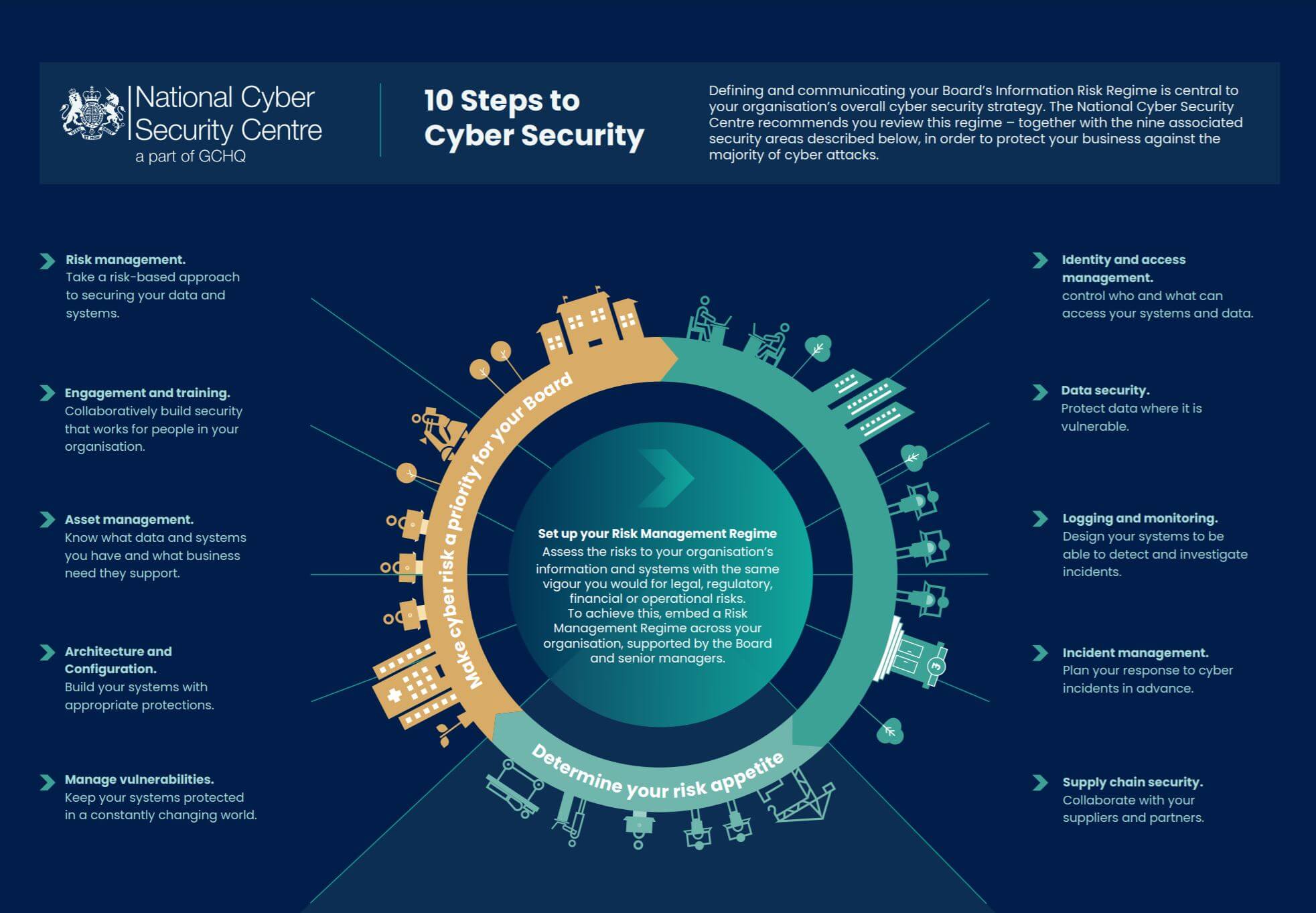UK businesses have experienced approximately 7.78 million cyber crimes of all types and approximately 116,000 non-phishing cyber crimes in the last 12 months (GOV.UK).
The National Cyber Security Centre (NCSC) is a government organisation dedicated to protecting the UK against cyber threats. They provide effective incident response to minimise harm to the UK, help with recovery, and learn lessons for the future. As part of their education plans, they have outlined 10 steps to help organisations improve their cybersecurity.
To better protect against cyber-attacks and data breaches, organisations should implement the recommended 10 steps to cyber security.
What are the 10 steps to cyber security?

- Risk management – identifying, assessing, and prioritising risks to minimise potential threats and vulnerabilities.
- Engagement and training – organisations should provide regular cyber security training to all staff members to promote a culture of security awareness and preparedness.
- Asset management – identifying, classifying, and managing all assets within an organisation to ensure they are adequately protected.
- Architecture and configuration – designing and implementing secure network infrastructures to protect against cyber attacks.
- Vulnerability management – identifying, assessing, and remediating vulnerabilities in systems and software to prevent potential security breaches.
- Identity and access management – protecting sensitive data by ensuring that only authorised individuals have access to it.
- Data security = safeguarding sensitive information and maintaining the trust of customers and stakeholders.
- Logging and monitoring – detecting and responding to security incidents promptly.
- Incident management – responding to and resolving security incidents systematically and efficiently to minimise damage and prevent future incidents.
- Supply chain security ensures that third-party vendors and partners meet the same security standards as the organisation.
Overall, the NCSC’s 10 steps provide a comprehensive framework for improving cyber security and reducing the risk of cyber threats.
The ten steps should be used as a guide to align with your organisation’s cyber security goals. At Intrasource, our cybersecurity consultants have a diverse customer base with wide-ranging security requirements that we expertly and proactively manage. We can work with your organisation to ensure you have taken all the necessary steps to keep your IT systems secure.



